Submitted by Antonello Magliozzi
Street Art 3.0 vs Urban Museum
Italy Architecture News - Sep 15, 2018 - 08:54 19078 views

“A wall is a very big weapon. It’s one of the nastiest things you can hit someone with”, says the artist Banksy. A message that can be associated with many "walls" of our modern and post-modern cities. To walls related to anodine buildings or urban areas with no singularity or unique identity, those walls that determine fragmented and squalid environments, those that emphasize at the same time the symptom of a sensory, psychological and social discomforts. Those entities that require attention and reinterpretation to not be left to degradation, but saved before being destroyed or transformed into new infrastructures or new works. Those walls that yearn for a new sustainable life, aiming to reach their own identity, to be communication vehicle not only for their uses and functions, but toward their semantic, sociocultural and political nature as well. Buildings to exist as nourishment for our sight, for our mind and our heart, to simply cohabitate with Man.
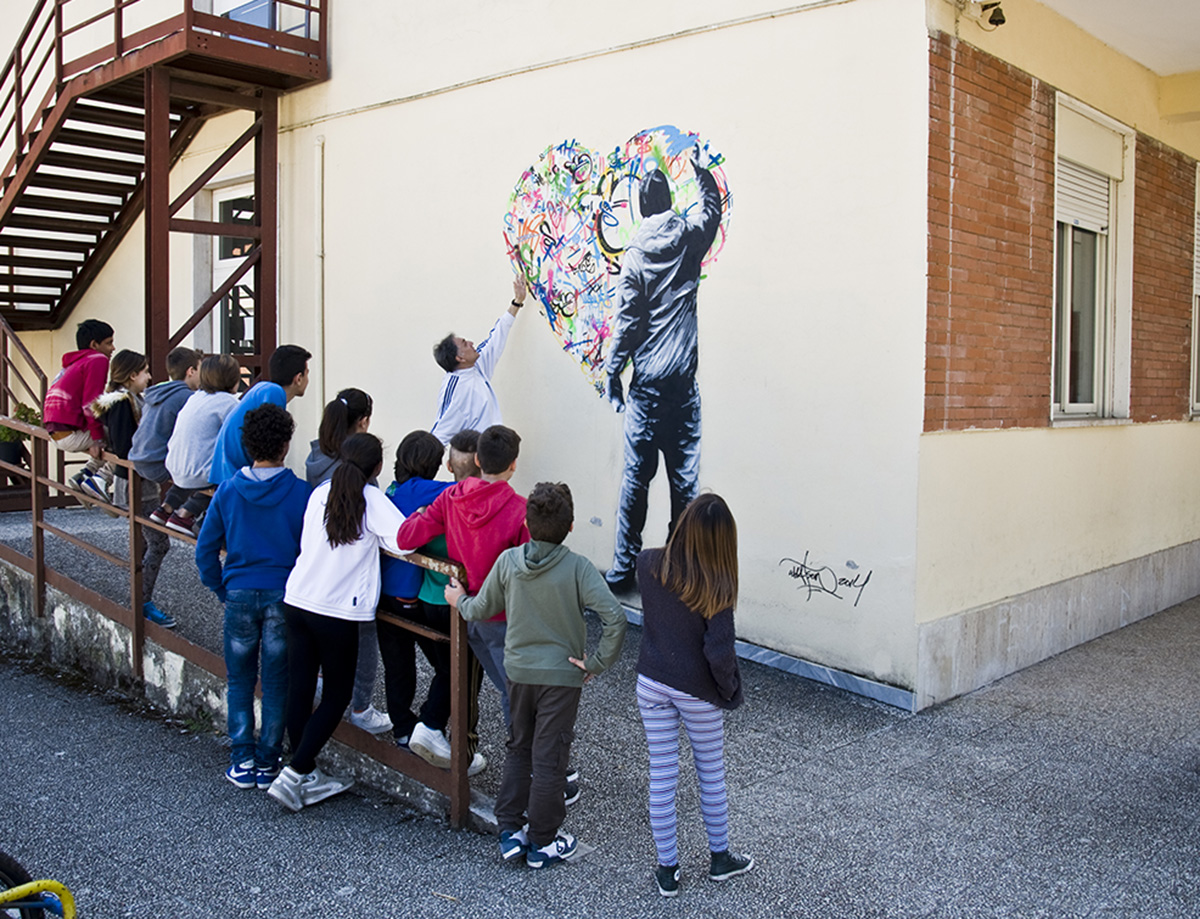

Martin Whatson, Memorie Urbane - Urban Festival 2014, Italy - Fondi. Image © Flavia Fiengo
That’s why the sensitive man, the contemporary artist, begins to consider walls as a media outlet, a social media, a vehicle for iconographic communications, to represent his own malaise, to declare social tensions, and to interpret the walls as items in an existential, abstract or naturalistic way. The artistic expression of an individual addresses the world to represent the survival needs of the man himself in his own context, as well as that of the walls themselves in their environments. A way in which the postindustrial contemporary man reacts and adjusts to the lack of harmony of his environment is through Street Art. An artistic phenomenon that is spreading today in many cities all over the world, both a systemic and anarchist movement that tries to challenge Western societies to wake to urbanizations that are far from Man's spiritual and material needs.

Lonac, Memorie Urbane - Urban Festival 2016, Italy - Cassino. Image © Flavia Fiengo
In the last few decades, we have seen an evolution from American writing to tags, to open air wall paintings. This artistic expression coined as Street Art in his various forms of the modern mural art entered in our cities with force. First with a direct and indirect social and political controversy, then with the experimentation of sophisticated pictorial techniques on evocative global subjects, almost always clandestine, bordering on the "criminal". Thanks to the "murals" of celebrities such as Banksy and Blu, Street Art finally gains artistic dignity and acquires followers, begins to be observed, studied and requested by the cities themselves, in some cases by museums.
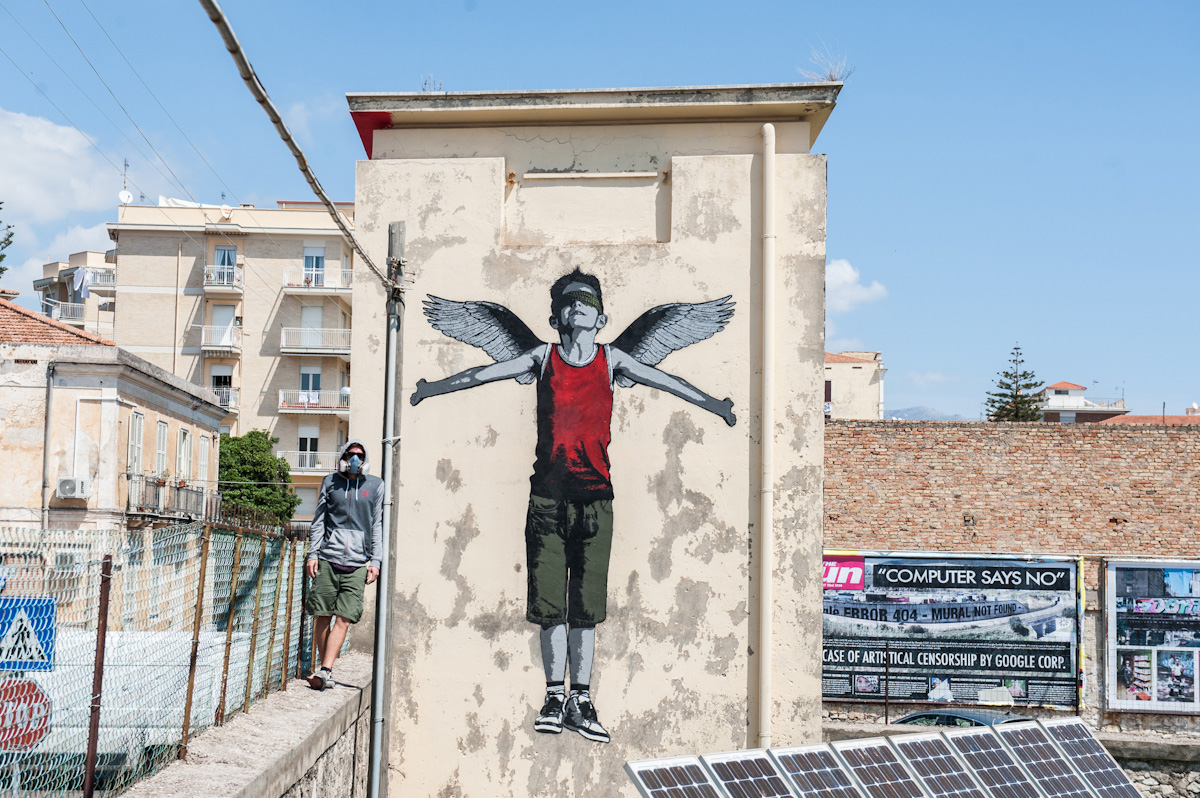
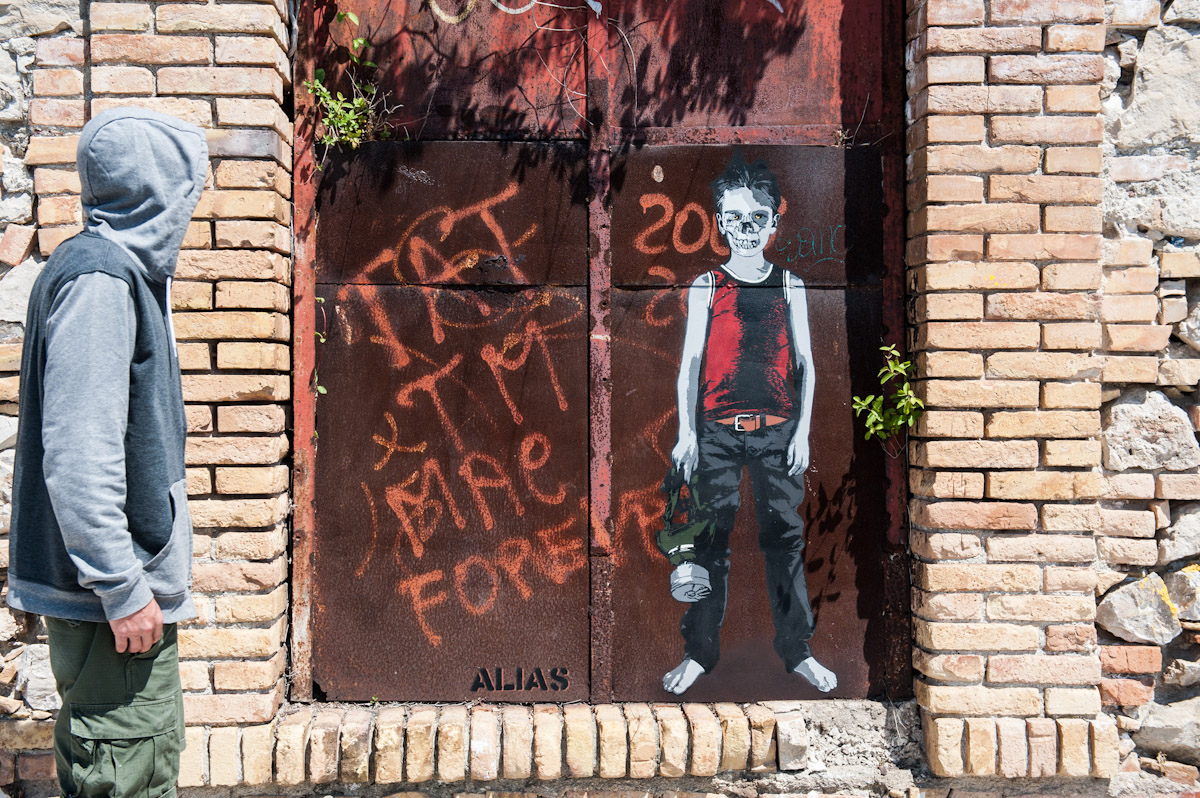
Alias, Memorie Urbane - Urban Festival 2015, Italy - Gaeta. Image © Memorie Urbane
Today, we encounter a new phenomenon of acceptance towards Street Art. From indecipherable tags to clear messages in support of commendable causes has allowed the viewer to transform into a supporter. Now the most famous artists no longer paint "against the law" but with the consent of public administrations or private individuals to bring artistic value to local buildings, or to "recover" degraded urban locations. Without wishing to ignore the controversy of those who would like to preserve the spontaneous, outlaw and genuine movement known as graffiti, a new era has taken hold, one that we can be define as: Street Art 3.0. A phase in which the representative image loses its polemical priority and turns, with a different maturity and a new irony, towards the "beauty" and the symbolic value of the subjects depicted, towards the semantics of the walls in their entirety and, therefore, the harmony of urban spaces. Street Art proactively responds to symptoms of discomfort by modern and post-modern cities and begins to contribute to the formation of a new "urban museum" with no geographical and cultural limits.

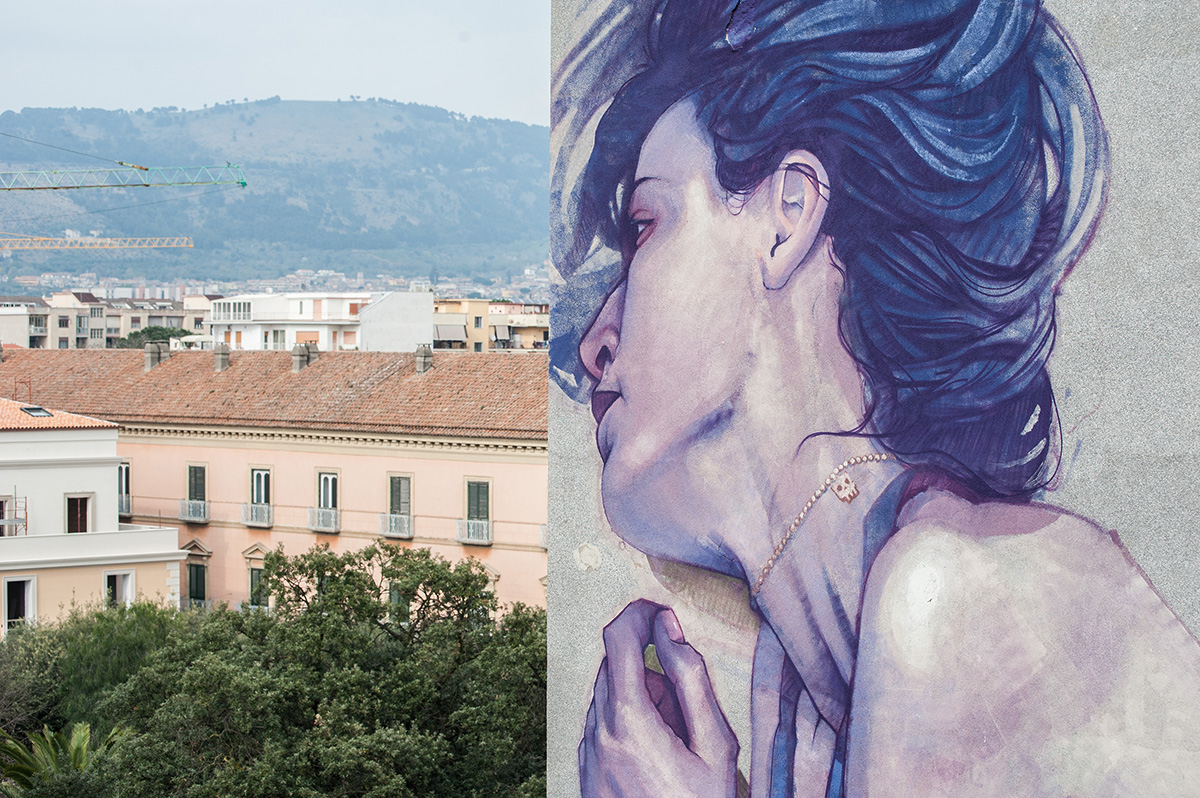
Betz - Etam Cru, Memorie Urbane - Urban Festival 2015, Italy - Caserta. Image © Flavia Fiengo
In this cultural context in last years, in Italy between Lazio and Campania, 40 artists from 13 countries have been able to create new wall paintings on numerous facades and walls, thereby contributing to realize new iconographic realities on environments previously anonymous and devoid of values, creating new features on urban spaces as well. This is the most important Street Art event in Europe, both for the number and for the value of interventions: Urban Memories - Urban Festival. Started in 2011, it is an ongoing project by Davide Rossillo and of Turismo Creativo. It has grown geographically year after year, turning the city into an authentic open air museum. An ongoing event, which has produced not only works of Street Art signed by authors around the world, but also new environmental qualities through a renewed relationship between the building walls and iconographic representation. The realization of fifth-curtains that constitute organic landscape and evocative pantomime together, with an alternation of totemic characters and symbols of elementary energy.

Millo, Memorie Urbane - Urban Festival 2015, Italy - Gaeta. Image © Flavia Fiengo
From the 17th to 23rd of September the Memorie Urbane – Urban Festival 2018 event continues, with the production of new murals by the Belgian artist Jaune in Italy, in the cities of Gaeta and Terracina. An artist who will leave his message based on the paradox between the visible and the invisible, with humorous and ironic representations of workers.
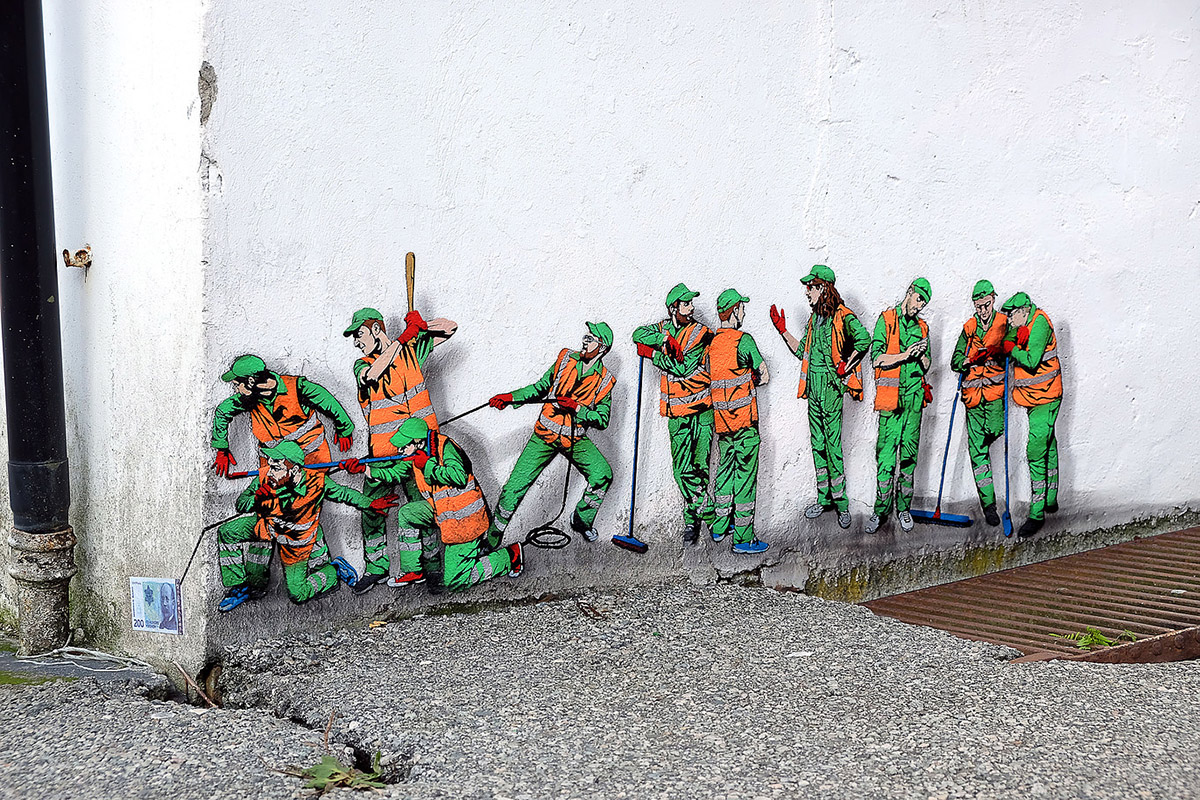
Jaune – Stavanger, Norwey - Nuart 2016. Image © Jaune
An idea that the artist has been carrying out for some time, which arises from his professional experience, and which in these days will become an urban metaphor within new contexts.
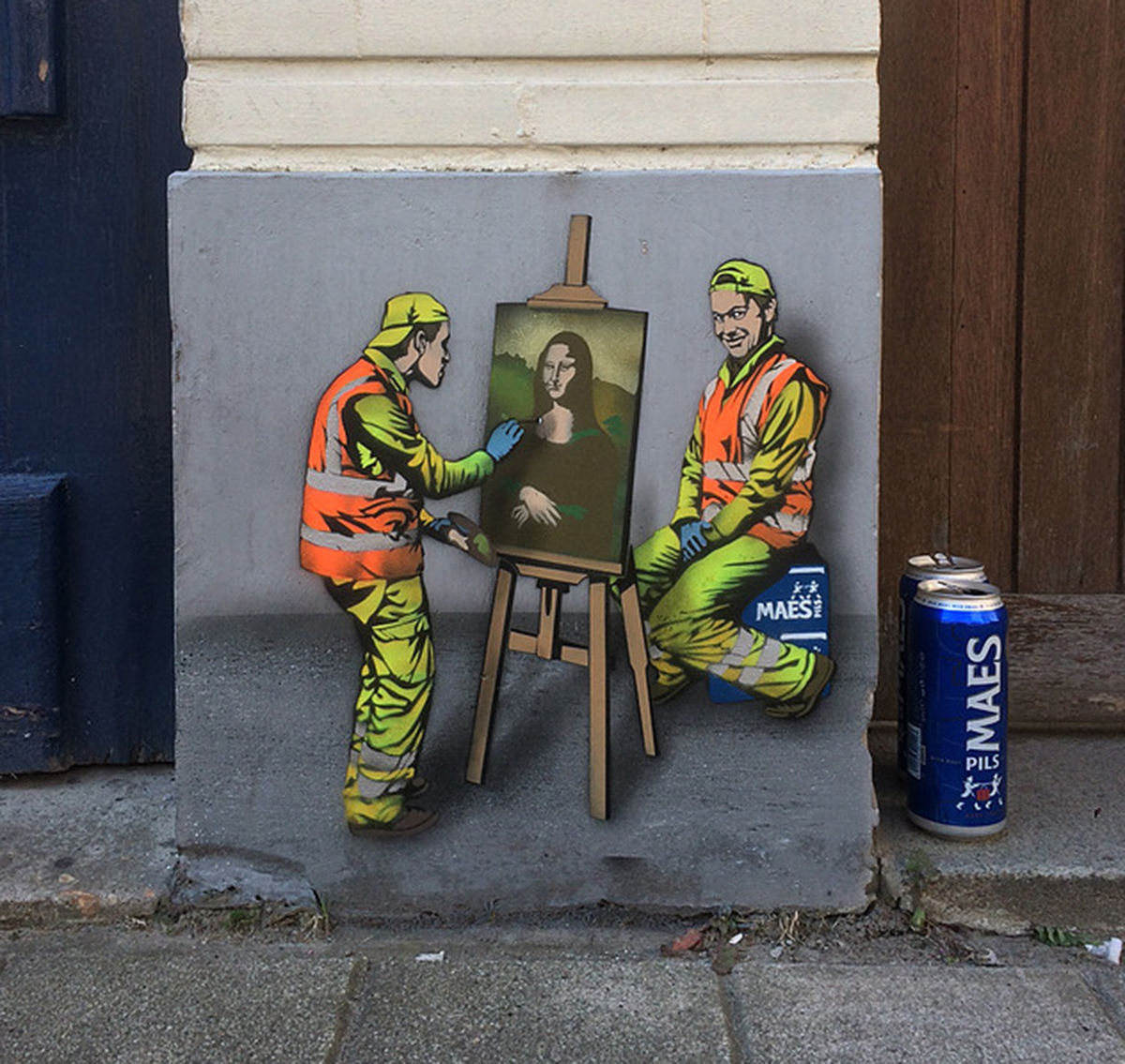
Jaune – The Crystal Ship Festival - Oostede, Belgium. Image © Jaune
Metaphors and images that want to be temporary, transitional as man, in a relationship with architecture that can be considered ephemeral as in the Junkspace of Rem Koolhaas and which, at the same time, recalls the modern value of the iconographic impact of communications visuals, of advertising promotions. A modern and ancient approach at the same time, the son of the holistic vision of our human and artistic history, the vision of the "total work of art", in which artists, artisans, architects, planners and landscapers determine the peculiarities of the environment in synchronous or asynchronous way, they try to improve the quality of the world in which they live in an attempt to produce art. They communicate with messages that speak of the present and anticipate the future. They recall that: "Art is sacred, it is rare, without purpose, it runs through the most solitary streets with great anticipation", as Walter Gropius said with the Bauhaus movement. It remind us that architecture is not an autonomous discipline, but the ultimate goal of every figurative activity.

Sepe-Chazme, Memorie Urbane - Urban Festival 2016, Italy - Fondi. Image © Memorie Urbane
Top image courtesy of Memorie Urbane - MTO, Memorie Urbane - Urban Festival 2015, Italy - Gaeta
